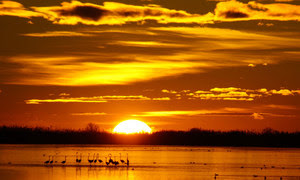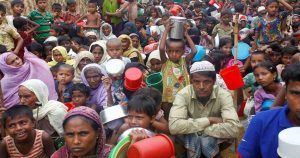Dhaka – Nepal’s army says it has finished draining a dangerous glacial lake near Mount Everest to a safe level, reports BBC.
The Imja glacial lake, at nearly 5,000m (16,400ft) high, was in danger of flooding downstream settlements, trekking trails and bridges.
The lake, which was originally 149m deep in places, has had its water levels lowered by 3.4m after months of pain-staking work, officials say. Imja is one of thousands of glacial lakes in the Himalayas.
Many of the lakes are said to be filling up fast because of accelerated melting of glaciers amid rising global temperatures.
Last year’s earthquake in Nepal is also feared to have further destabilised Lake Imja.
The military said the project to make it safe was the highest drainage project of its kind, with army personnel and Sherpas working for six months to construct an outlet to gradually release the water.
After the outlet was constructed, nearly 4m cubic metres of water was released – in a process that took two months. Top Khatri, the project’s manager with the department of hydrology and meteorology, told the BBC the process would now be applied to other lakes.
“It was a pilot project that we completed without any unfortunate incident and now this model will be replicated to reduce risks in other glacial lakes as well,” Mr Khatri said.
It’s a good news for downstream countries like India and Bangladesh because the Ganges river system received an extra 4 million cubic feet of water during this wet season when the river had been in spate because of heavy rainfall caused by the Southwest monsoon. Water experts in India and Bangladesh can now make an assessment to determine whether this extra four million cubic feet of water did contribute to the Ganges floods in India with its residual effects on Bangladesh at the fag end of the rainy season. The Nepalis deserve to be congratulated because the reported drainage has at least for now reduced the danger of a glacial lake burst from this one. There might have had been a very devastating effect of such an event at downstream because much more quantity of water might have flashed down washing away everything on the way. The Nepali project was also challenging because of the heavy snow and the dangers of working at high altitude. Officials said teams could only work safely for a few hours each day, according to the BBC report.
“We suffered from some level of stress and fatigue as we were working at this high altitude and extreme location,” Lt-Col Bharat Shrestha, who headed the army team, told the BBC from the Everest region.
“In the beginning, a few people had to be evacuated as they suffered from high altitude sickness but gradually we all acclimatised ourselves to this place.”
The draining of the lake is a part of a UN project to help Nepal deal with the impact of climate change. The UN provided nearly $3m in funding to lower the lake’s water levels.
Early warning systems have also been installed for communities downstream.
However, many local Sherpas feel too much attention has been given to Imja, with alarmist media reports panicking locals, while the risks posted by other glacial lakes are ignored by officials.
“We live in fear that we might be surprisingly hit by floods from glacial lakes that are becoming dangerous but have not received any attention,” said Nimji Sherpa, a leader in Thamo village.
Glacial lakes have broken their banks in Nepal more than 20 times since the early 1960s. Three of those incidents have been in and around the Everest region.




